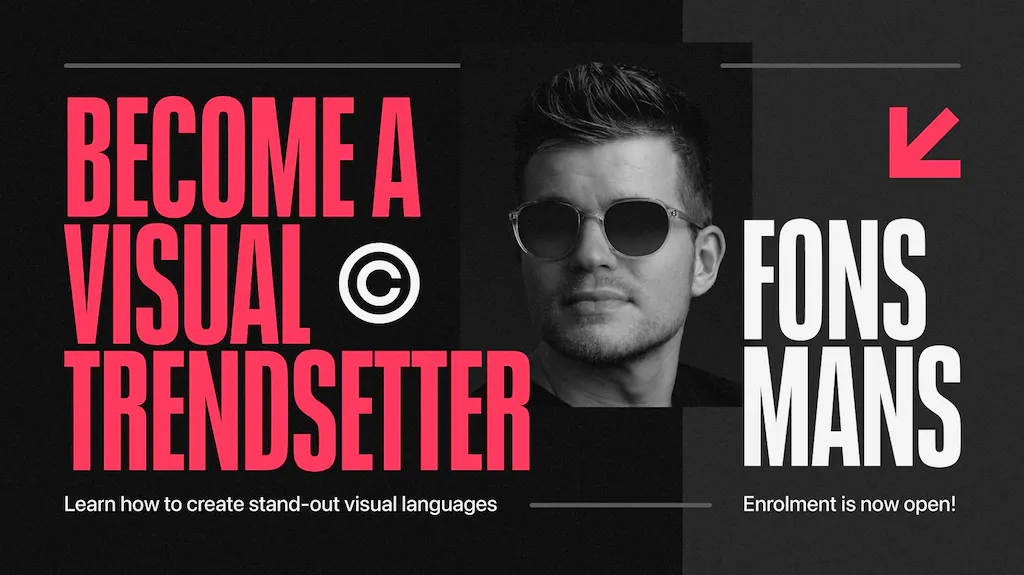In the ever-evolving realm of visual design, few names are as prominent as Fons Mans. Hailing from the creative hub of Rotterdam, Netherlands, Fons has solidified himself as a visual trendsetter, continually pushing boundaries in both product and visual design. His approach seamlessly merges the technicalities of design tools with the artistry of visual aesthetics, a fusion that many aspire to achieve.

Having been influential in shaping design workflows in large companies like Adobe and Apple, and having contributed to pivotal Figma updates, his contributions are not just limited to the Netherlands but have made waves globally. His expertise isn't just limited to tutorials or livestreams; he's become a beacon for budding designers and seasoned professionals alike, all looking to refine their skillset. As we navigate through this guide, we'll harness his wisdom and insights to craft a robust branding strategy.
5 Steps for Designing a Brand From Scratch
Branding is both an art and a science. It's a delicate dance between your vision for the brand and how the world perceives it. While creativity plays a pivotal role, certain strategies and approaches can guide the process. To truly differentiate yourself in the crowded marketplace, you need a distinctive brand identity. An identity that resonates, communicates, and stands the test of time. Let's delve deeper into Fons Mans' approach:
1. Ask yourself why you started the project
Every iconic brand begins with a purpose. Before you even open your design tools or select a typography, introspection is crucial. What is the story behind your brand? What gaps is it addressing in the market? This isn't just about identifying a niche; it's about understanding the emotional, functional, or societal gap your brand aims to bridge. By establishing a clear 'why', you set the foundational ethos for your brand, ensuring all subsequent design choices resonate with this core belief.
2. Before starting, think about the direction you want to give the brand
The trajectory of a brand is pivotal to its success. It's not just about the here and now but the
vision for the future. Consider the legacy brands like Apple: their focus on innovation and user-centricity was clear from the onset. With platforms like Webflow and Adobe, you have the tools to not just visualize but also prototype your vision. Think expansively. Are you aiming to disrupt, to innovate, or to enhance? Your brand's direction will be a compass for all subsequent decisions, from UI design to product offerings.
3. Collect inspiration constantly and create a mood board
In a world inundated with visuals, finding unique inspiration can seem daunting. Yet, Fons Mans believes in the power of observation and open-mindedness. Inspiration isn't just about following the latest visual trendsetter but understanding the ethos behind their choices. A mood board isn't just a collection of designs you like; it's a curation of emotions, aspirations, and visions you want your brand to evoke. From livestreams that showcase design processes to platforms like fonsmans.com that offer a plethora of visual experiments, ensure your mood board is dynamic, and aligned with your brand's core beliefs.
4. Create the first impression of the brand
First impressions are often lasting impressions, especially in the digital world where user attention spans are fleeting. Visual design, in this regard, isn't just about aesthetics but communication. Leveraging tools like gradients, intricate typography, or even selecting the right template can set the tone. Think of your brand as a visual experiment that intertwines with the emotions of your target audience. It's not about being ostentatious but about resonating. For instance, a sleek, minimalistic design might work for a tech startup, while a vibrant, colorful palette might be apt for a children’s brand. Platforms like Figma provide a sandbox for these visual experiments, allowing designers to toy with possibilities before landing on the 'perfect' design.
5. Test your brand a lot
Once your
brand design is in place, the work isn't over. In fact, it's just beginning. Testing is where the rubber meets the road. It's crucial to see how your audience perceives your brand, how they interact with it, and if it evokes the feelings you intended. Utilize prototyping tools like Framer or even Webflow to bring your brand to life in a mock environment. Conduct surveys, gather feedback, and iterate. The design landscape, as Fons Mans often emphasizes, is continually evolving. Your brand should be flexible enough to adapt while staying true to its core ethos.
Create Fascinating Visual Languages with Maven
The world of design is vast, with myriad tools, platforms, and methodologies at one's disposal. But as Fons Mans often elucidates, it's not about the tool but how you wield it. From Figma's intricate features to the dynamic capabilities of Framer, the landscape is ripe with
potential. Yet, amidst this sea of possibilities, where does one turn for guidance? Enter Maven.

Not merely a platform, but a sanctuary for 10x designers and enthusiasts. Beyond
offering courses, such as
Get a Taste and
Become a Visual Trendsetter by Fons Mans, Maven also stands as a beacon for holistic learning. It amalgamates expert-led courses, hands-on tutorials, real-world projects, and a thriving community of learners. For those looking to navigate the realms of design, from typography nuances to mastering design tools, Maven offers a guided and enriching journey.





